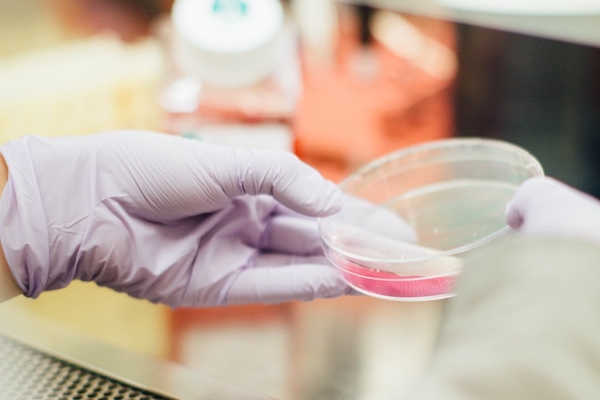Known donation arrangements cover a wide range of different personal circumstances. In some cases a known egg, sperm or embryo donor is a relative, friend or someone else already known to the recipient/s. In other cases the donor is someone the recipients have matched with specifically for the purpose of conceiving a child together (perhaps via a matching website or agency).
The donor might intend to have a very limited role in the child’s life, perhaps just being available to be contacted if the child wishes in later years. Alternatively the donor might play a much more significant role and be an important figure in the child’s life. A known donor is, however, not a co-parent (i.e. someone who intends to act as a fully involved parent in the child’s life). Find out more about co-parenting and multi-parent families.
Setting strong foundations
If you are planning a known donation arrangement, it is important to set strong foundations. Disputes in known donation cases very commonly stem from underlying mismatched expectations so you should therefore not rush into trying to conceive, but instead take your time and make sure you discuss the roles you each intend to have. Be as clear as you can about what you want, and be honest with each other and yourselves.
Should we put a written donor agreement in place?
Pre-conception agreements are not legally binding under UK law, which means that they do not govern who the child’s legal parents are, and if there is a dispute between you at a later stage, the family court is not obliged to follow what the agreement says if they think something else is in the child’s best interests.
Having said that, pre-conception agreements are an invaluable part of stable and successful known donation arrangements. They provide clear evidence of what you intended at the outset, which may carry weight in court if there is a dispute (and will at least prevent argument over what was agreed, which is a common feature of disputed cases). Even more importantly, they help to avoid disputes from ever happening, by ensuring that you all start off with clarity and consensus, and by creating a solid framework you can all follow.
There are no fixed requirements for ‘formalising’ pre-conception agreements for known donation (they do not, for example, need to be witnessed by a solicitor). However, an agreement is likely to carry more weight in court if it is legally accurate and if you had legal advice before it was signed.
Known donation agreements across borders
If you are living in or connected with different countries, then you need to seek advice in both relevant countries to ensure that you are setting things up in the best possible way. In other jurisdictions it may be very important to conceive in a particular way, or to have a written agreement in place before conception, in order to establish the right people as the legal parents. In such cases a known donation agreement should be prepared with input from lawyers in both jurisdictions, so a single agreement can protect you everywhere you need it.
Who are the legal parents of a child conceived through known donation?
For UK law purposes, the parent who gives birth will always be the child’s legal ‘mother’ and will be registered on the birth certificate as such. A known egg donor will never be a legal parent assuming she does not give birth.
The position of known sperm donors is more complex. A known sperm donor will not be the legal father if:
- the recipients of the donation are a couple and are both the legal parents of the child; and/or
- the donor donates through a UK licensed fertility clinic and signs the correct documentation to donate to someone else without any intention of being a parent himself.
If the donor is not the legal father, no financial claims can be made against him or his estate, and it will not be possible to record his name on the child’s birth certificate.
In other known donation situations, the donor will or may be the legal father. This is most commonly the case where the recipient is a single woman or an unmarried couple and the conception takes place through home insemination.
If the donor is the legal father, he will be potentially vulnerable to financial claims during his lifetime and on death, irrespective of whether he is registered on the birth certificate. It will also be possible to name him on the birth certificate (if both he and the birth mother agree) but doing so is a significant decision since it will give him shared parental responsibility (the right to be involved in all decisions about the child).
Find out more about legal parenthood following donor conception.
Securing parenting rights and status after the birth
It may be possible to agree to take steps after the birth to alter or add to the legal position on parenthood. For example, a non-birth mother can adopt her partner’s child, extinguishing the status of a known donor who is the legal father. It is also possible to add parental responsibility for additional parents to give some degree of shared status.
Find out more about using adoption to secure your family’s status and other ways of securing your parental rights without adopting.
Disputes about known donation
Typically, known donor disputes concern how much of a role the donor should play in the child’s life. That may in practice relate to the status of the donor in the child’s life, how much time the child spends with them, how contact has progressed over time or whether they have a right to be consulted or involved in decision-making.
As with other disputes about arrangements for children, the adults should consider mediating before making a court application, but if they can’t agree either side can make an application to the family court to ask a judge to decide what is in the child’s best interests.
It is important to understand that even if a donor is not the child’s legal parent, they can still potentially make a court application seeking contact with the child. If the donor is not a legal parent, they will not have an automatic right to bring a court application and will need the court’s permission first. However, this is likely to be given if they can show ‘sufficient connection’ with the child, for example through a pattern of previous contact. As with any children dispute, the court’s paramount consideration is the child’s best interests. The court might take into account any written donor or co-parenting agreement, but will weigh this against the history of what has happened, the connections each adult has with the child, and what best promotes the child’s welfare going forward.
In practice, the case law in such situations has been enormously variable in outcome, with a great deal depending on the particular facts of the case.
Known donor disputes where the donor was the legal father
In Re D (lesbian mothers and known father) 2006, a known donor to a female same-sex couple was given parental responsibility, but on a restricted basis. It was felt that his status should be acknowledged, but that the nuclear family unit (of the two mothers) should be protected from interference.
In Re B (role of biological father) 2007, the biological father who had donated sperm to a female same-sex couple was the non-birth mother’s brother, and he applied to court seeking a more significant role. He was denied parental responsibility but given ‘identity contact’ with the child four times per year.
In Re P and L (2011), there was a long and protracted dispute between co-parents, the male same-sex fathers wanting a greater role than the female same-sex mothers accepted. The fathers were ultimately acknowledged to be ‘secondary parents’ and given regular contact. The court also said that any agreement between the parties (although nothing was put in writing in this case) should be given weight.
In the Court of Appeal Case of A v B and C (2012), the court allowed a biological father to see his son regularly, even though he had agreed with the child’s same-sex mothers at the outset that he would have no involvement. The court rejected the concept of primary and secondary parents, saying that this risked demeaning the important role a known father could offer, and said that the only principle was that child welfare was paramount.
Known donor disputes where the donor was not the legal father
Re G and Re Z (2013) involved two female same-sex parent couples who were each civil partners and so joint legal parents named on their children’s birth certificates. An application was made by their known sperm donors (who were not the legal fathers) for regular father-style contact. The court gave the donors leave to make an application (because the contact they had already been given in the early months of the children’s lives gave them sufficient ‘connection’).
Re X (No.2) (2015) was a similar case involving female same-sex civil partners who were both the legal parents of a little girl and resisting an application for contact from her biological father. The donor was given leave to bring an application, but ultimately the court decided that it was in the child’s best interests for him to have limited and indirect contact.
Financial disputes following known donation arrangements
Whether a known donor is financially responsible depends solely on whether he is the child’s legal father. It is often a surprise for a donor to learn that no account will be taken of any agreement (written or verbal) that he should be treated as a donor. It is also irrelevant whether the donor has had involvement with the child.
If a donor is the child’s legal father, an application can be made:
- to the Child Maintenance Service for regular child support
- to the family court for an order under Schedule 1 of the Children Act 1989 (which might include top-up maintenance or a capital or property award).
There have been a number of high-profile cases involving sperm donors pursued for child support.
In 2007, fireman Andy Bathie was pursued for child support by the Child Support Agency for two children he had helped a female same-sex couple to conceive. The parents had separated, and the birth mother (unable to pursue her former partner for child support) had made an application against the children’s biological father.
Similarly in 2012, Mark Langridge was pursued by the Child Support Agency for maintenance payments for two children twelve years after donating his sperm in a private arrangement to a mother in a same-sex relationship.
In 2013, in the case of M v F and H (2013) a married woman had met a sperm donor via an Internet matching site and conceived a child. She pursued the donor for child support, and there was a dispute over whether conception took place by artificial insemination or ‘natural insemination’. After a fact-finding hearing, the court found that conception had taken place through intercourse and held the donor liable for child support and substantial legal costs.
The UK’s leading conception lawyers
Find out more about how we support those creating families
Related articles

Legal parenthood after donor conception and assisted reproduction
Where children are conceived through artificial insemination or the transfer of an embryo, the Human Fertilisation and Embryology Act 2008 dictates…

Co-parenting arrangements and multi-parent families
Parents who are not in a relationship with each other but each want a family may agree to conceive a child together as co-parents. If both are single, your child will typically have a….

UK law for stored eggs, sperm or embryos
The Human Fertilisation and Embryology Authority was set up in 1991 and comprises members who are clinicians, researchers or fertility/embryology…
